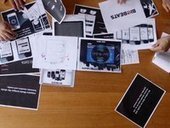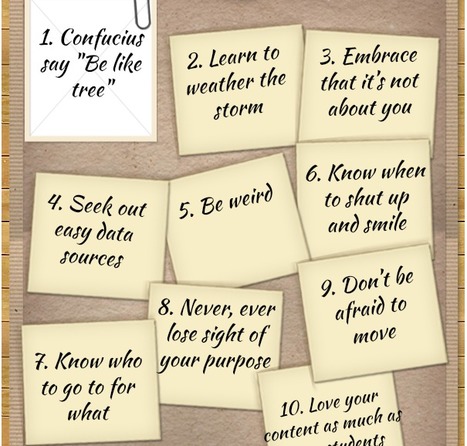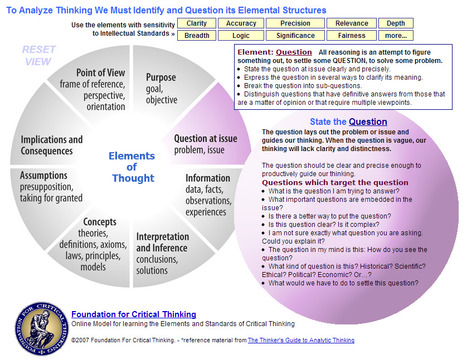Learn how to use research to develop keywords to guide the pre-production process in part two of our storytelling workshop series with Stillmotion.
Get Started for FREE
Sign up with Facebook Sign up with X
I don't have a Facebook or a X account
 Your new post is loading... Your new post is loading...
 Your new post is loading... Your new post is loading...
Paul leslie large's curator insight,
October 15, 2014 12:02 AM
...a couple more: - know your students (passions/knowledge/relationships) - be a part of the learning team; don't be afraid of "I don't know". |

Alistair Parker's curator insight,
January 30, 2013 3:57 AM
Beth Dichter's insight: This is a great interactive model of critical thinking. One circle has 8 elements of thought: * Question at issue * Information * Interpretation and influence * Concepts * Assumptions * Implications and Consequences * Point of View As you role over and selelct an element of thought you are hown additional information about the element. For example, if you were to select Point of View you would be prompted to understand your point of view and provided with questions to further your thinking. In addition there are also prompts for intellectual standards to consider. The intellectual standards include: clarity, accuracy, precision, relevance, depth, breadth, logic, significance, and fairness. In each of these area there is a brief definition as well a three additional questions to consider. There is also one choice (more) that provides you with additional standards you might want to consider and suggests that you think of your own. 
R Hollingsworth's curator insight,
January 30, 2013 9:33 AM
I'm thinking this is a pretty complicated model given that many of our very best critical thinking is done within the space of a blink! However, it's useful to be able to break it down and explain it for undergraduates for whom universities have great expectations in criticial thinking but don't really explain how they know what it is when they see it. And, sadly, in introductory courses too often professors don't expect critical thinking of their students - sticking too close to recall or lower levels of application thinking for their expectations of student performance. 
R Hollingsworth's comment,
January 30, 2013 9:34 AM
terrific toy for educators to play with and use - would work great in a group discussion with a faculty scholarly community...
|















This is the second video of four that describe how to "write" a story that you will be filming. From this page you will be able to find the first of the four and links to the additional two.
The first video discusses the need to understand the four P's:
* People: Who is in the story?
* Place: Where does the story take place?
* Plot: What is the conflict and the journey?
* Purpose: Why should anyone care about this?
The second video discusses the need to do research and to find keywords that relate to People, Place and Plot.
The third video moves on to the final preparation work that needs to be done before filming.
The fourth video brings it together and provides a link to worksheets that you can download and use.
If you are introducing storytelling to your students, or doing it yourself for the first time these videos provide a background that will help make your project successful.